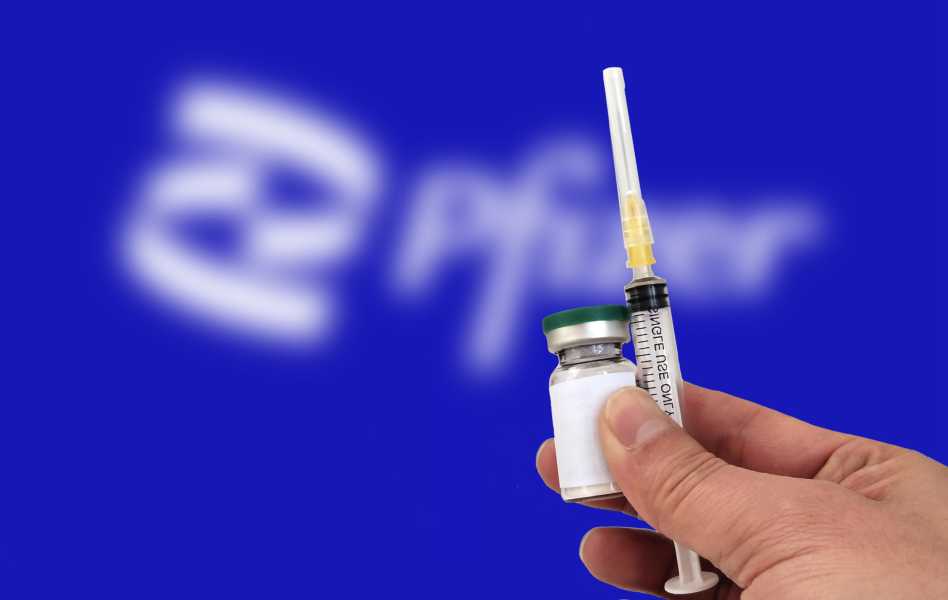Many of the American public still deeply distrust the official medical narrative.

(Photo credit should read CFOTO/Future Publishing via Getty Images)
Like most kids in the 1990s, I was born in a hospital. In the first years of my life, I received every single recommended vaccine on the Centers for Disease Control and Prevention’s schedule—a shorter schedule than today’s requirements, but still an extensive one. When I briefly considered a career in the U.S. Marine Corps as a college freshman, I willingly took another slew of required vaccinations. Prior to 2020, I would not have described myself as distrustful of the medical establishment; on the contrary, I was happy to take any prescription that promised to fix minor ailments when incurred.
When my first child came into the world in 2021, however, I decided to forgo a hospital birth. This was despite the initial hesitation of my own mother, a former nurse, who cautioned me with a statement about the statistically high risk of death in out-of-hospital births. (This statement, we both later learned, was not true of midwife-assisted home births, a subset of all out-of-hospital births.) The initial incentive against giving birth in a hospital was not a desire to test my odds, nor was it prescient knowledge of how midwifery was going to protect myself and my daughter from a cascade of needless medical interventions found in too many hospitals. The incentive was that, under the care of physicians in Northern Virginia in 2021, my husband was uninvited from ultrasounds, and I would have been required to endure labor and delivery in a mask. The aggressive, unyielding adherence to policies that the same experts had called useless only a few months prior was enough to make me distrustful.
In the estimation of POLITICO’s Joanne Kenen, this public relations problem is exactly the culprit behind a new RSV vaccine’s poor performance. Lingering Covid medical misinformation has made the target audiences for the seasonal respiratory virus vaccine hesitant to take it. Only 16 percent of eligible pregnant women and 22 percent of eligible retirees actually did. This statistic, especially when coupled with a declining kindergarten vaccination rate—93 percent of kindergarteners were considered “fully vaccinated” for their age in 2022, versus 95 percent in 2020—suggests many of the American public still distrust the official medical narrative. For Kenen, this mistrust is caused by the bogeyman of “malicious misinformation.”
She writes,
Still, health organizations have begun to mobilize since the tidal wave of Covid vaccine misinformation undermined demand for the shots and drove broader suspicion toward all vaccines, including routine childhood immunization for diseases like measles. But while clinicians and health groups are more alert to the threats, much of the population is so distrustful of public health and medicine—inside or outside of government—that any assertions of safety immediately get sucked into the conspiracy vortex.
If we had not endured nearly two years of petty tyrants telling us to double mask, Lysol our grandmothers, and show our papers before entering a restaurant, we might be able to laugh. But memes and chain emails don’t hold a gaze for four years and beyond.
Such loss of trust can only be the result of something much firmer: For many Americans, this was watching public health officials run roughshod over science and debate for political gain. The primary reason many parents are not vaccinating their 5-year-olds is not rootless suspicion but much concrete evidence that the CDC, FDA, and major medical organizations manipulated public opinion in the months following March 2020. Americans’ mistrust is not caused by misinformation any more than a house is knocked over by a door-to-door salesman. It is caused by untrustworthy actors in the federal bureaucracy and the medical establishment.
Subscribe Today Get daily emails in your inbox Email Address:
As if we needed one more example of this, Kenen herself is an employee of Johns Hopkins School of Nursing and Bloomberg School of Public Health. Like her, many of the reporters who purported to keep the public health machine accountable during the Covid-19 pandemic behaved more like advocates for the same public health machine, making it hard to tell the needles from the hay. (Unfortunately, this intimate relationship does not seem to make the reporters better at data science.)
There’s another consideration here too, which is the moving target of “fully vaccinated.” Children today are required to take a minimum of 76 doses of 18 vaccines by the age of 18 years. That is a lot of shots for any parent, even those who are still friendly to the public health regime. Is the decline in childhood vaccination rates caused exclusively by vaccine hesitancy, or is it that the bar has gotten too high for the average parent to find it worth reaching? This certainly makes optional shots like the RSV vaccine less appealing than ever.
If “bad information” is the problem, the solution, for those with a monopoly on Good Information, is more aggressive control of language. This has been tried since 2020, and has proven unhelpful in converting vaccine skeptics into vaccine lovers, but nevertheless the medical community persists. The next step for public health officials, according to POLITICO and the health experts it cites, should be “a way of monitoring social media to rapidly identify newly emerging misinformation.” In other words, the experts’ latest narrative simply needs to be propagated faster, smarter, better, and maybe this time Americans will fall in line. Heaven forbid health, or science, get in the way.
Sourse: theamericanconservative.com






